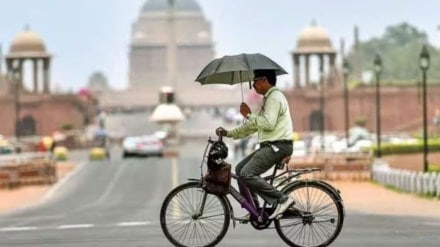India is witnessing the longest heatwave that is showing no signs of abating in several parts of the country even as an early monsoon has weakened and threatens to be delayed in reaching the central and northern states. Studies on the high temperatures — several cities have recorded over 50 degrees Celsius this summer — and their repercussions are worrying.
A recent World Meteorological Organisation (WMO) report predicts even higher mercury levels globally in the five years till 2028. The mean temperatures are 90% likely to be warmer for this five-year period than the previous one, because of which Indian agriculture could be further hit. In 2023, which was the hottest year globally in terms of data available since 1850, the WMO reported record levels of greenhouse gas emissions, ice cover loss, and climate challenges.
In India, heatwaves have led to decline in crop yields in the pre-monsoon season. The sobering predictions imply that the central and state governments will have to help farmers combat climate threats, including interventions in tweaking farming methods.
Mrutyunjay Mohapatra, the chief of the India Meteorological Department (IMD), recently said that heatwaves will be more frequent, durable and intense, if precautionary or preventive measures are not taken. A business-as-usual approach at this juncture would come at a cost of human lives as well as productivity.
According to one study that looked at data since 1990, more than 153,000 deaths annually around the world are linked to heatwaves, with India accounting for the highest share with over one-fifth. A study published in One Earth found that if the tropics heat up by another 1°C, it would lead to a loss of half the working hours for nearly 800 million people.
In such a scenario, India has to mull over novel approaches to work and include flexible hours for outdoor workers who face the brunt.
It is also true that urban areas everywhere are affected much worse by heat waves than rural areas. Last month, a study by the Centre for Science and Environment on six megacities in India pointed out that they were not cooling at night at the rate they did earlier.
Its analysis showed that a lethal combination of air and land surface temperatures, and relative humidity adversely impacts heat stress in cities. It observed trends like increase in relative humidity in all climate zones, and significant increase in the built-up areas in all cities, which also has a direct co-relation with rise in urban heat stress.
In Indian cities, this summer has worsened the heat island effect — the higher temperatures experienced by urbanised areas, as physical infrastructure traps the sun’s heat and releases it more than natural landscapes do.
The way ahead is adapting to the challenge and mitigating it. As of December 2023, heat action plans have been prepared in 23 states, but with varying quality and degree of implementation. There is a need for city-specific management plans as there can be no one-size-fits-all solution.
One initiative that can be scaled up across cities is cool roofing solutions, which Ahmedabad and Telangana have already introduced. As cities worldwide tackle extreme heat, some have adopted ingenious cooling solutions such as installing more awnings, increasing green canopy, painting streets with reflective coating, creating “cool island” spaces, green corridors, and green rooftops. Besides considering such immediate measures, it is time to rethink how we build cities and live in them.
